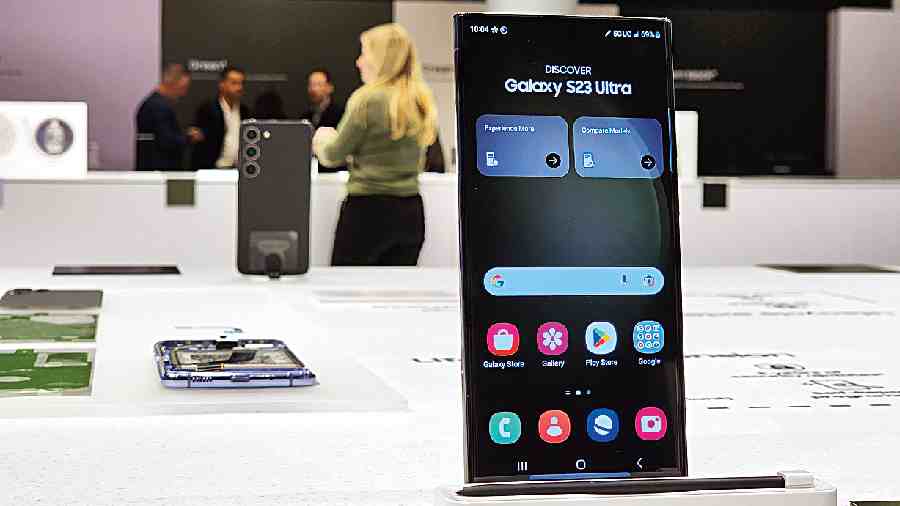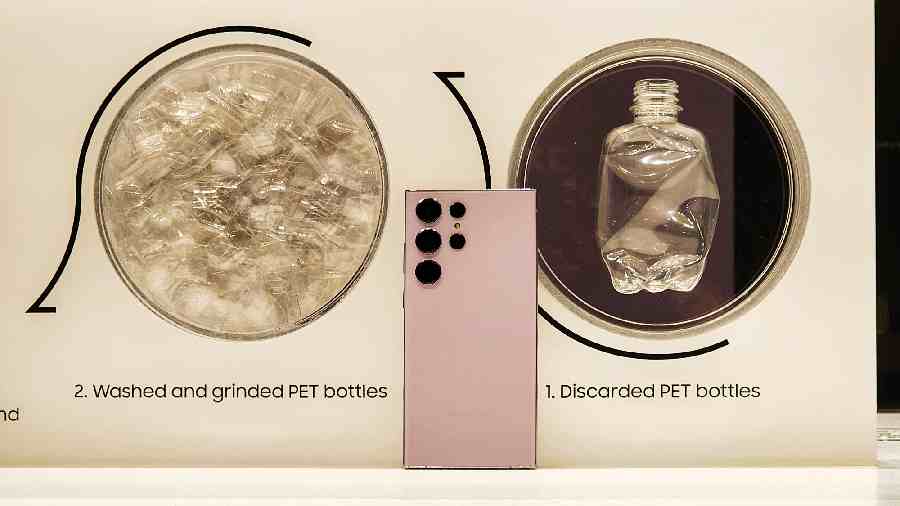Phones keep getting faster and more durable but what we don’t talk about is that our phones are also using more recycled materials. We already know that Samsung has been using materials from discarded fishing nets in its flagship and foldable smartphones but this year, the company took a leap forward with the Galaxy S23 series.
The S23 series revolutionises how eco-conscious design and innovation can come together to make a positive impact on the planet. Through open collaborations the Galaxy S23 series has more recycled materials compared to Galaxy S22 Ultra, including recycled aluminium, recycled plastic and recycled glass sourced from fishing nets, water barrels and PET bottles.
The usage of recycled fishing nets in the new series is expected to save more than 15 tons from entering the world’s oceans by the end of 2023.
The series is also built to be reliable for years to come. It is the first smartphone to incorporate Corning Gorilla Glass Victus 2 glass, which offers more durability for long-term use and contains an average of 22 per cent pre-consumer recycled material. Each S23 model uses a packaging box made with 100 per cent recycled paper.

New Samsung Galaxy phones on display in San Francisco

Recycled plastics sourced from discarded PET bottles are used in the back glass and front case of the Galaxy S23 Ultra
Perhaps the most important part of sustainability is how far we can go without upgrading the unit. This means, software upgrades play an important role. For users who want to extend the life of their device, the Galaxy S23 series’ premium experience can be sustained through the years with four generations of OS upgrades and five years of security updates.
The announcement follows Samsung’s “together for tomorrow” marketing campaign last month during CES to promote sustainability. Meanwhile, Google committed to five years of updates last year with the debut of its Pixel 6 phones. But the company later clarified that it is five years of security patches and only three years of actual Android OS upgrades. Keeping that in view, Samsung is offering more room for upgrades.
“The Galaxy S23 series incorporates more recycled material than any other Galaxy smartphone today, specifically, the Galaxy S23 Ultra features recycled material in 12 components, including internal and for the first time, external. That’s double of what was seen in Galaxy S22 Ultra,” said Mark Newton, director, head of corporate sustainability, Samsung Electronics America, during the launch of the new Galaxy S series of phones in San Francisco.
KEEPING THE PLANET IN MIND

The company has scaled up the use of recycled oceanbound plastics in the Galaxy S23 series
■ Recycled plastic: Samsung has developed and incorporated new recycled plastics sourced from discarded PET bottles in the back glass and front case of the Galaxy S23 Ultra.
■ Fishing nets: The company has scaled up the use of recycled oceanbound plastics in the Galaxy S23 series, and by doing so, Samsung predicts it can prevent more than 15 tons of discarded fishing nets from entering the world’s oceans by the end of 2023.
■ Recycled aluminium: The Galaxy S23 Ultra is the first Galaxy flagship device to integrate recycled aluminium, used in the side key, volume keys and SIM tray.
■ Recycled glass: The Galaxy S23 Ultra is the first smartphone to incorporate Corning Gorilla Glass Victus 2, containing an average of 22 per cent of preconsumer recycled content, in the front and back glass.
■ Recycled paper: The company is using 100 per cent recycled paper for packaging box, front and cover protectors and have removed the plastic sealing sticker.
